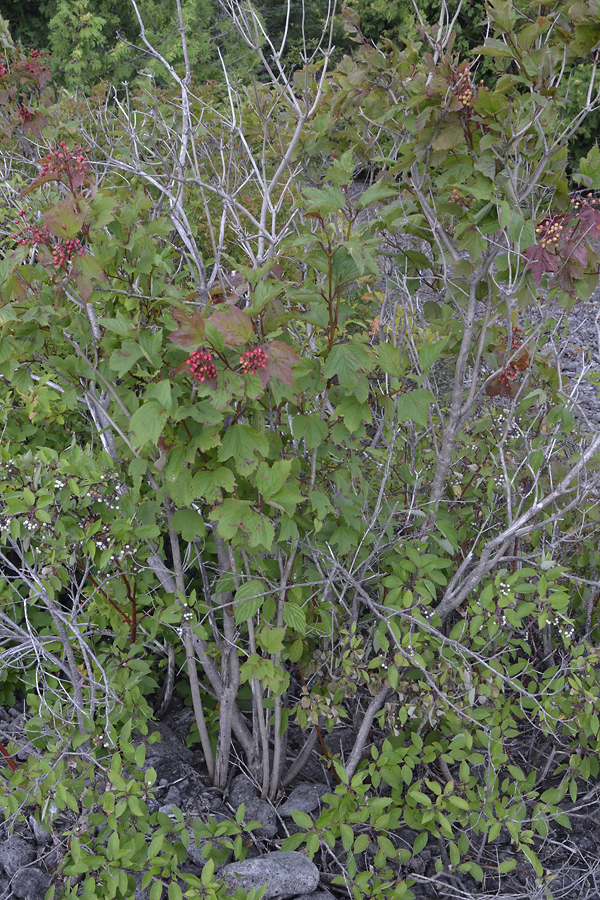
Woody > Viburnum > Viburnum trilobum > Viburnum trilobum 'Bailey Compact'
Viburnum trilobum
'Bailey Compact'
Bailey Compact Viburnum
Origin: Bailey Compact was introduced by Bailey Nursery, St. Paul, Minnesota, United States of America.
| Family |
| Viburnaceae (Adoxaceae) |
| Genus |
| Viburnum |
| Species |
| trilobum |
| Cultivar |
| 'Bailey Compact' |
| Category |
| Woody |
| Type |
| Shrub (deciduous) |
| Pronunciation |
| USDA Hardiness Zone |
| 2-7 |
| Canadian Hardiness Zone |
| 3 |
| RHS Hardiness Zone |
| H7 |
| Height |
| 1.5 m |
| Spread |
| 1.5 m |
Photographs
Description and Growing Information
Flowering Period
| General Description |
| An excellent plant for screening and informal hedging. Often used for defining boundaries between houses and to create a good privacy screen, yet at the same time offers a white flower, red fruit and dark green foliage. |
| Landscape |
| Bailey Compact becomes too large for the small landscape reaching a size of 1.5 x 1.5 m. An excellent plant for screening and informal hedging. Often used to create privacy or define boundaries between houses. |
| Cultivation |
| Easy to grow in good, well drained garden soil in fall sun to light shade. |
| Shape |
| Mounding. |
| Growth |
| Medium |
| ID Characteristic |
| Leaves are a simple 3-lobed, broad-ovate, 4-10 cm. long. Used for screening and informal hedging. It becomes too large for a small landscape environment. |
| Pests |
| In warm humid areas stem blight can kill the plant. |
| Habitat |
| Horticultural origin. |
| Bark/Stem Description |
| Light grey and unassuming since it is covered or hidden by foliage. |
| Flower/Leaf Bud Description |
| Smooth, green-reddish, sometimes sticky with 2 connate outer scales. |
| Leaf Description |
| Leave are simple, 3-lobed and 4-10 cm long. Sometimes the middle lobe is elongated and leave are dark green. Brilliant yellow-orange autumn colour. |
| Flower Description |
| Flowers are 6-9 cm. in diameter and are a flat-topped cyme; extremely handsome white colour, but rare on young plants and sparse on mature ones. |
| Fruit Description |
| The fruit is a bright red drupe, mature in early September. It is edible and used for preserves and jellies but is rare in occurrence. |
| Colour Description |
| Medium to dark green and changes to yellow or red-purple in the autumn. New growth has a reddish tinge, especially around the leaf margins. |
| Texture Description |
| Medium in foilage and medium to course in the winter. |
| Propagation |
| Requires warm/cold routine, but cuttings are easy to root. |
